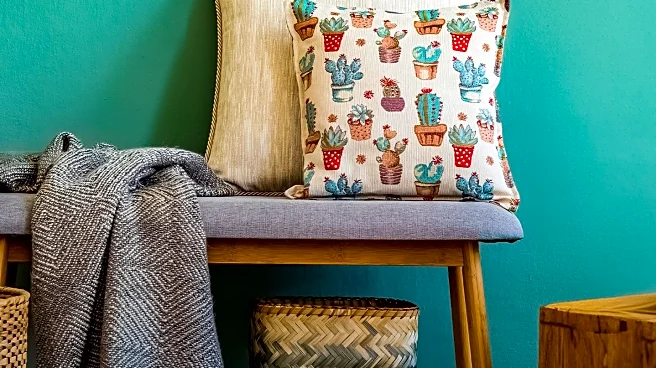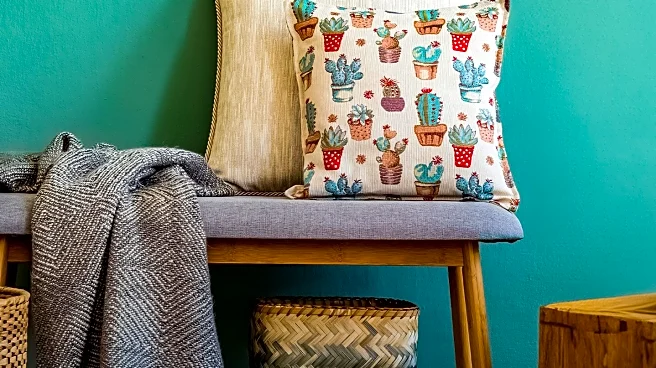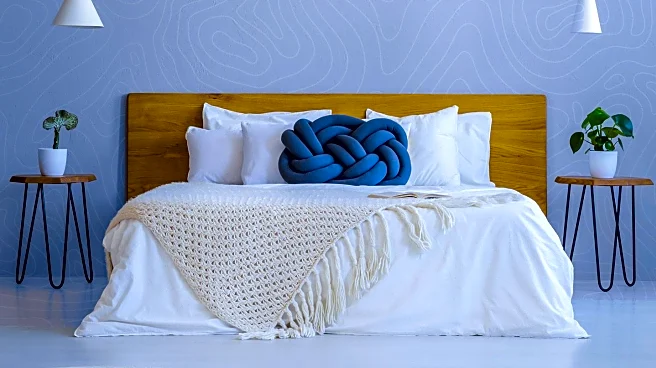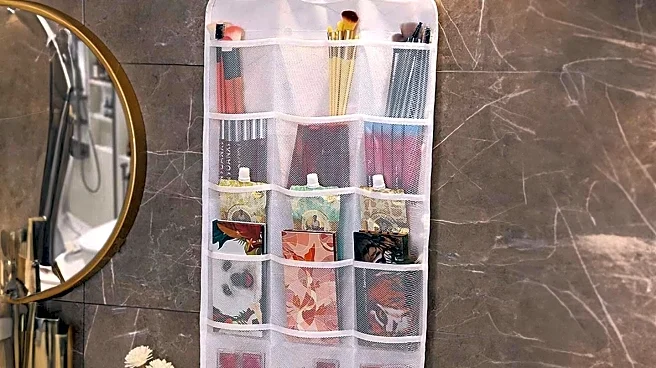What's Happening?
A TikTok influencer, known as @grillodesigns, has gained significant attention for a creative home decor hack that transforms a $10 wooden dish rack into an invisible bookshelf. This innovative approach offers a cost-effective and space-saving solution for book lovers who are looking to display their collections without the bulk of traditional bookshelves. The hack involves using a wooden dish rack and two self-adhesive hooks to support the rack vertically on a wall, allowing books to be placed as if they were dishes. The viral video showcasing this method has garnered over 8.5 million views, highlighting its popularity and appeal.
Why It's Important?
This viral hack underscores a growing trend towards affordable and space-efficient home decor solutions, particularly in urban areas where space is at a premium. By repurposing everyday items like dish racks, individuals can creatively maximize their living spaces without incurring significant costs. This trend not only benefits consumers looking to personalize their homes on a budget but also reflects a broader movement towards sustainable living practices by reusing and repurposing existing materials. The popularity of such hacks on platforms like TikTok also demonstrates the power of social media in influencing consumer behavior and home design trends.
What's Next?
As this hack continues to gain traction, it is likely that more individuals will explore similar DIY solutions for home organization and decor. Retailers may also respond by offering products specifically designed for such multipurpose uses, potentially leading to a new market segment focused on versatile home goods. Additionally, the influence of social media platforms in shaping consumer preferences is expected to grow, prompting more brands to engage with influencers to showcase innovative uses of their products.
Beyond the Headlines
The success of this hack highlights the cultural shift towards valuing creativity and resourcefulness in home design. It also raises questions about the role of traditional furniture in modern living spaces and how consumer expectations are evolving. As more people seek to personalize their environments, the demand for customizable and adaptable home solutions is likely to increase, challenging traditional furniture manufacturers to innovate and adapt.










